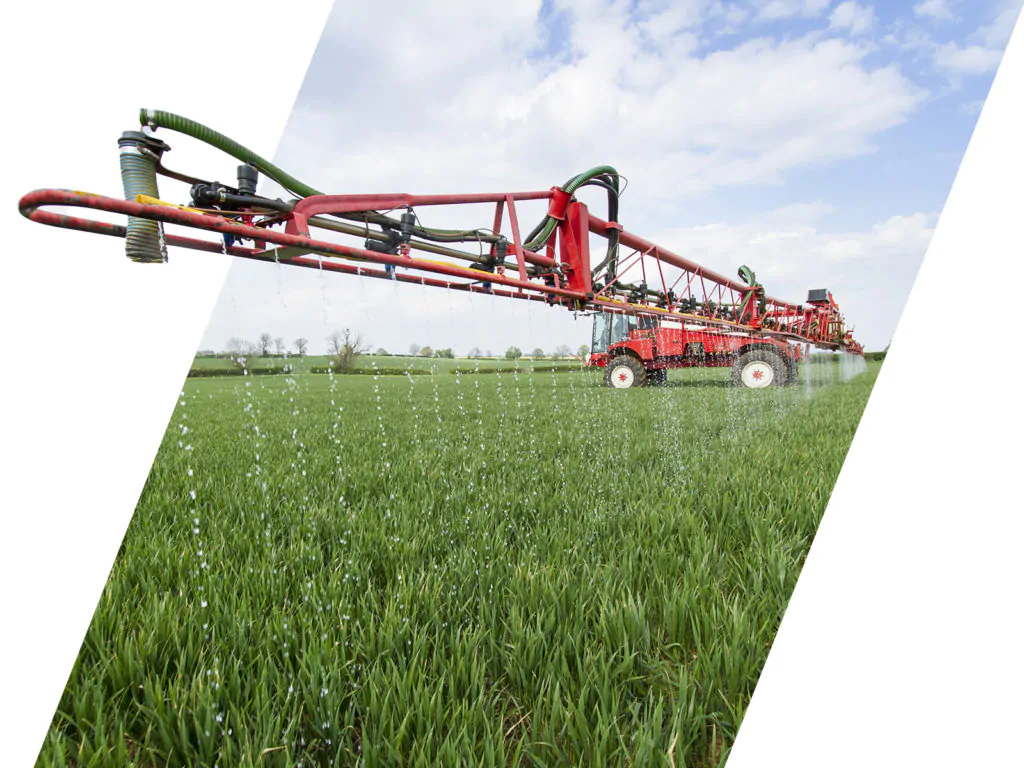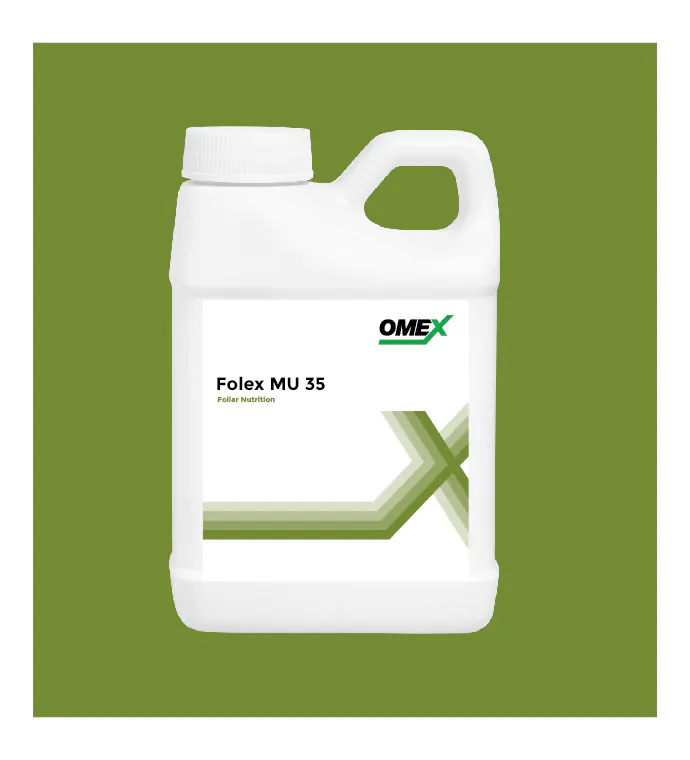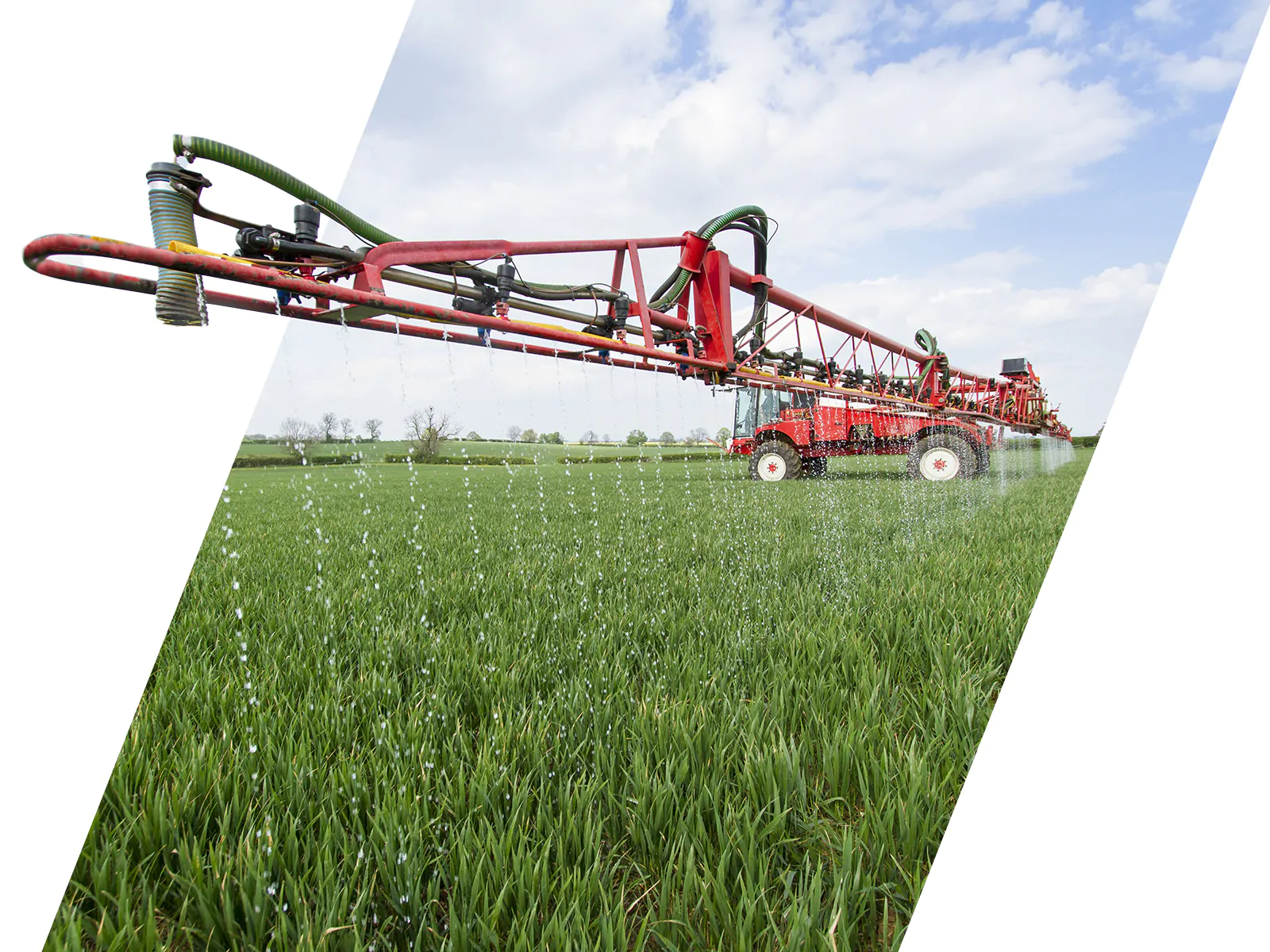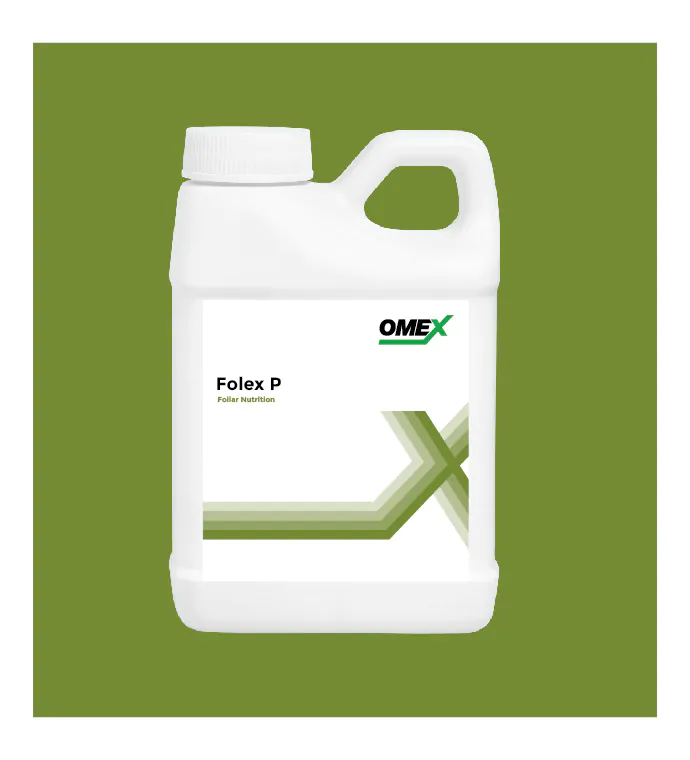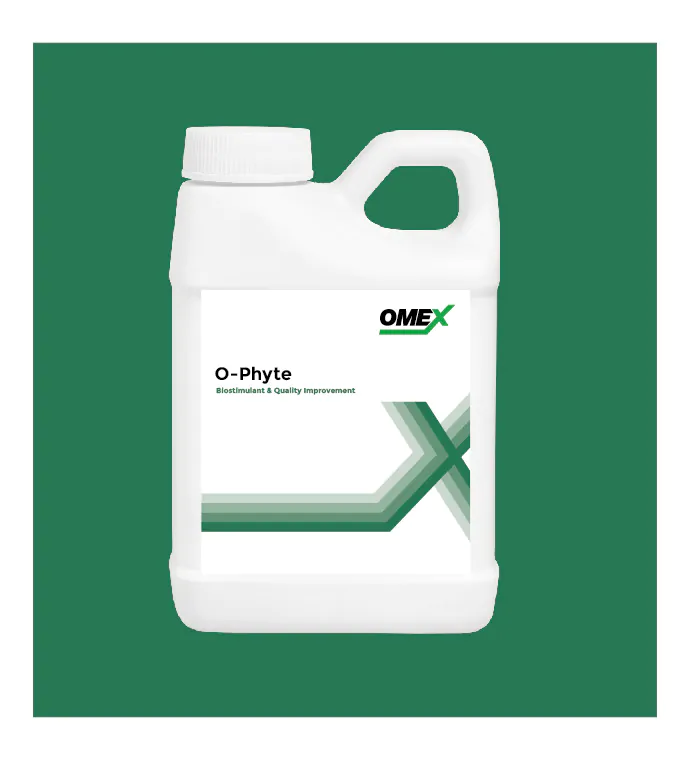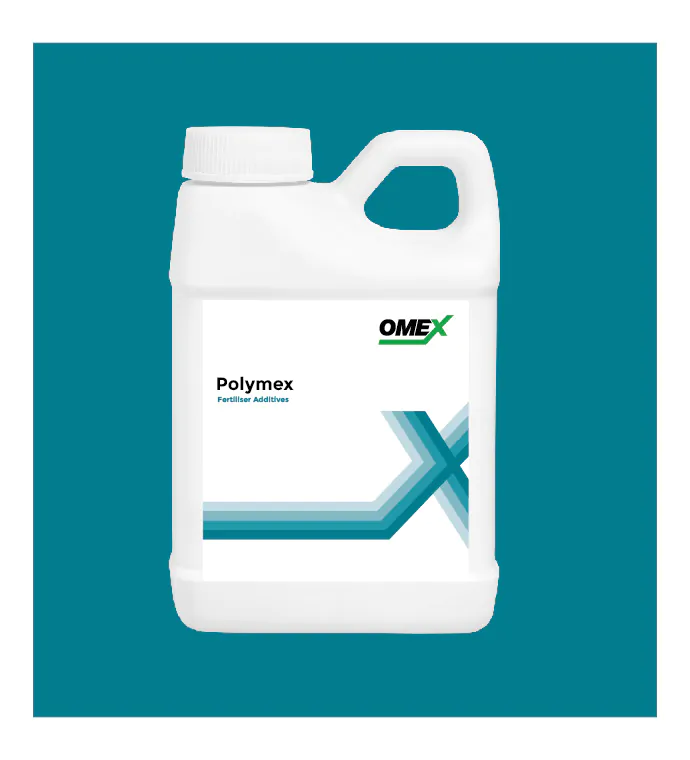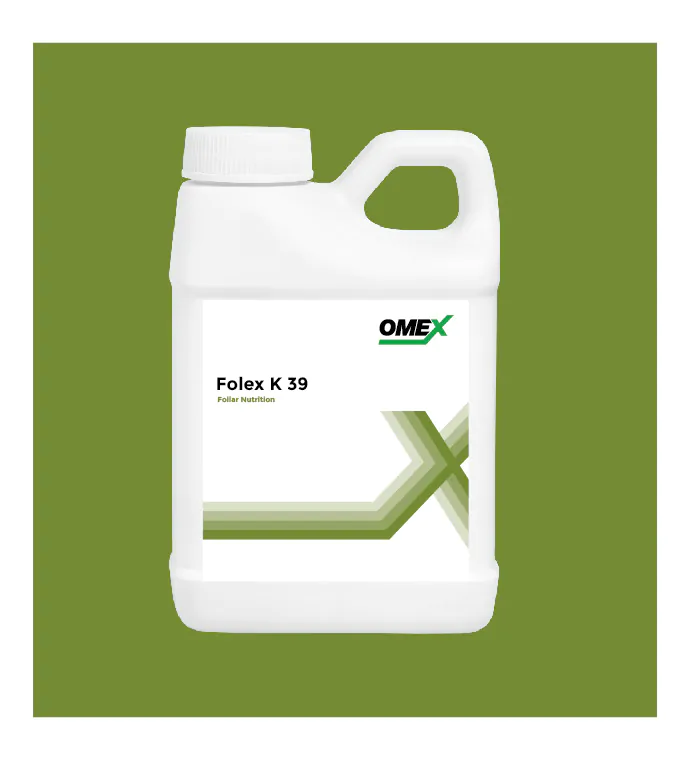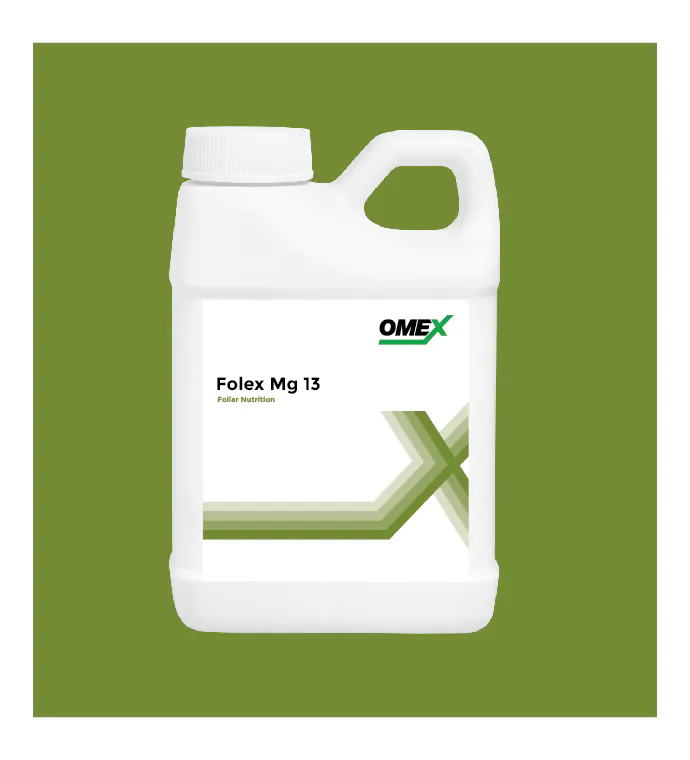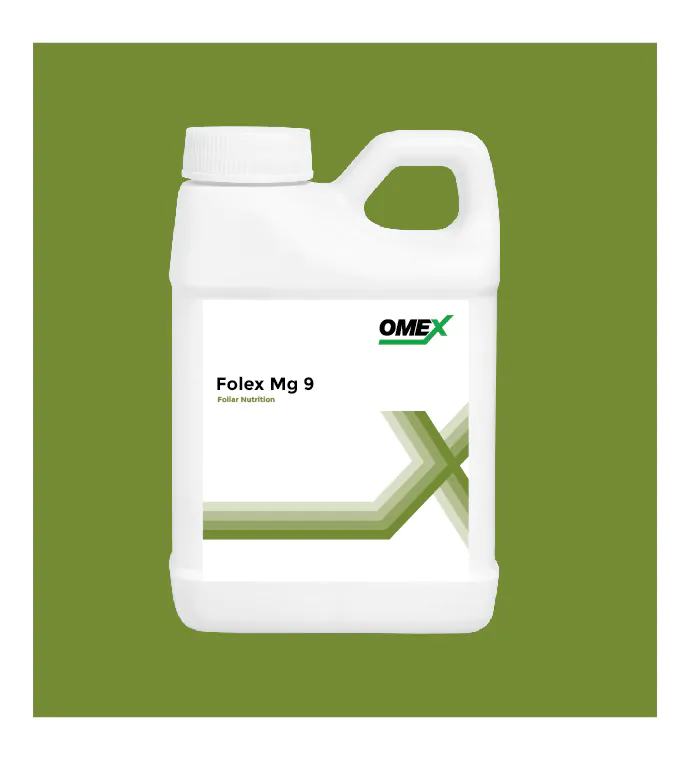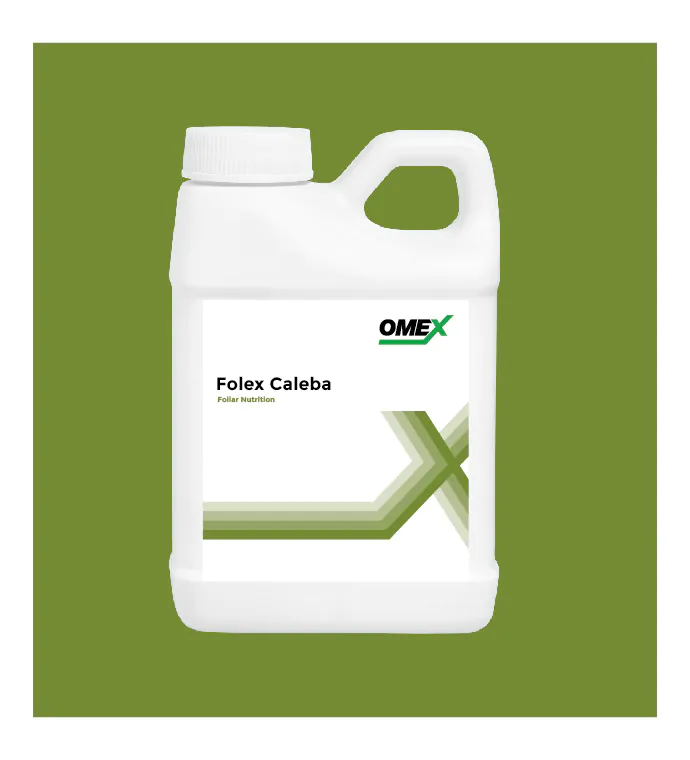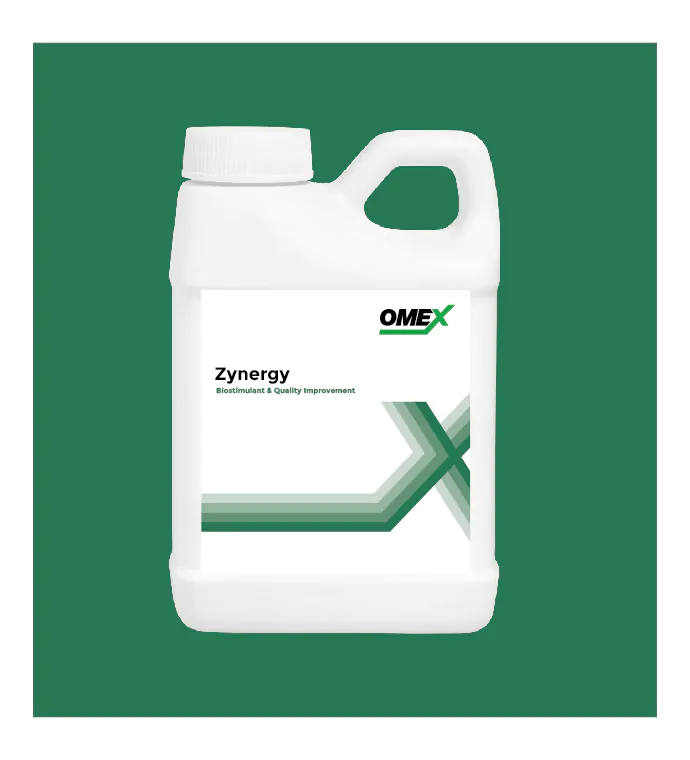Potato Fertiliser and Crop Nutrition

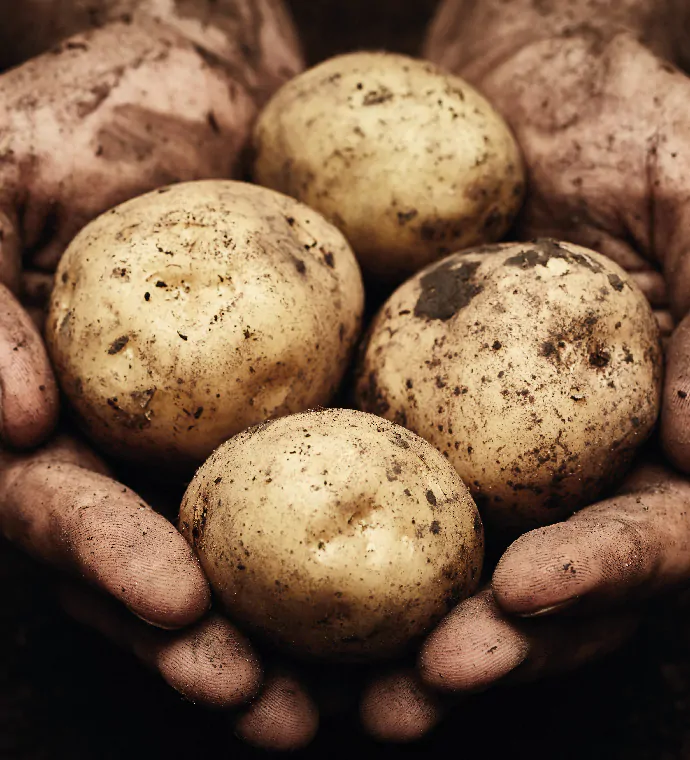
Potato Fertiliser and Crop Nutrition Advice
OMEX provides liquid fertiliser for potatoes, alongside crop nutrition and a suite of technical services to ensure growers are able to produce high quality and high yielding potato crops.
With a team of FACTS qualified advisors, and dedicated crop nutrition agronomists qualified in BASIS potatoes we’re well positioned to guide you on profitably and sustainably growing your potato crop.
Contact our team for expert advise bespoke to your farming needs.
View The OMEX Potato Programme
Working Towards Sustainable Potato Fertiliser
As the industry moves toward producing in a more sustainable manner, we’re committed to helping farmers on their journey towards a greener future. OMEX offer a suite of management tools for farmers to ensure they’re making the most efficient and effective fertiliser choices
Get In Touch To Find Out More
Soil sampling ahead of planting gives growers a thorough understanding of the nutritional structure of the soil, and utilising SMN Plus gives growers an understanding of the nitrogen that will be available throughout the crops growing cycle.
Nutrient use efficiency is also a key element in growing more sustainably, not only environmentally but also to ensure the long term financial sustainability of your farming business.
More About Soil Analysis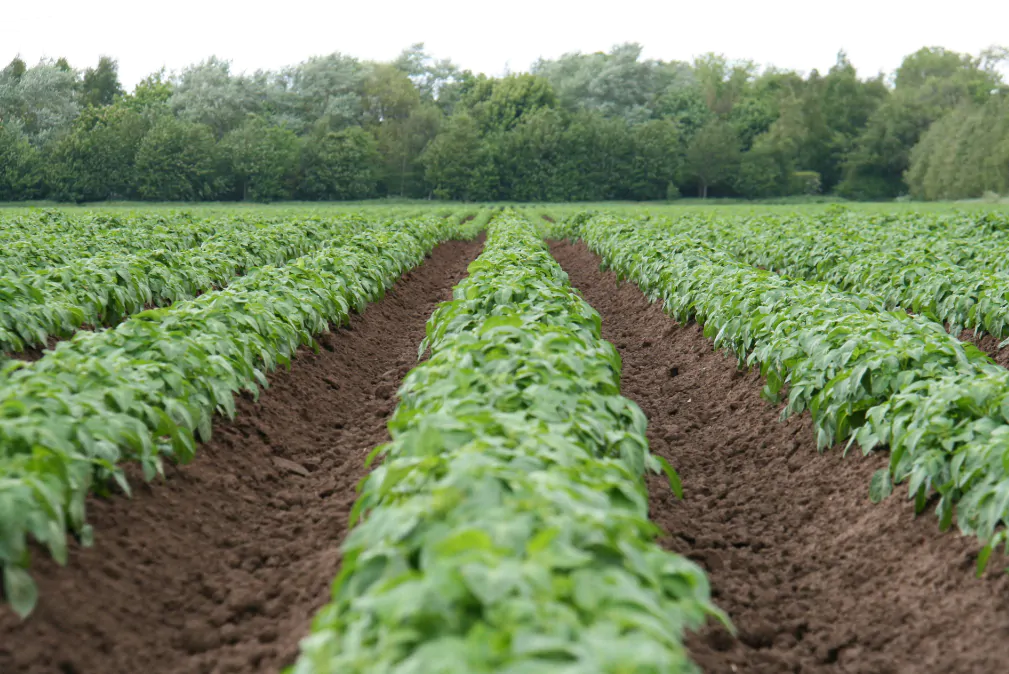
Sustainable potato crops should only receive inputs that are absolutely necessary for improving potato health, quality and yield.
Utilising SAP analysis furnishes growers with 17 live nutritional levels within the growing crop, annotated with agronomist recommendations to ensure inputs aren’t over or under applied.
SAP analysis helps you make the most effective potato fertiliser and nutrition decisions.
More About SAP AnalysisWorking With Potato Growers Across The UK
OMEX has been working with potato growers across the UK and all over the world for almost 50 years and has conducted thousands of hours of research. Our science-led approach offers farmers accurate advice on producing more sustainably, utilising tools and nutrients that are available within their armoury.


Potato crop base fertiliser
Supplying the potato crop with key elements within the base fertiliser will aid establishment and rooting. Base fertilisers applied before planting and incorporated in to the seed bed are recommended at rates for the specific crop, depending on nutrients already available in the soil (determined by soil testing prior to planting).
The expected yield and the quality considerations of the variety – e.g. numbers for seed and salad, size and skin finish for packing, dry matter for processing. There are key elements required within potato base fertiliser that OMEX supply within their bulk fertiliser ranges:
- Nitrogen to promote haulm development, tuber yield and tuber size
- Phosphate to aid root development and increase tuber numbers per plant
- Potassium to increase tuber size and overall yield
- Sulphur on deficient soils helps to improve tuber quality for processing, reduce the risk of skin diseases and improve nutrient utilisation

NPKS fertiliser for potatoes
The OMEX Multiflo range offers farmers a fully soluble liquid NPK fertiliser for potatoes. Each potato growing system is unique and you should consult with a FACTS qualified advisor ahead of planting.
Potato growers typically utilise an 11.5-10-4+S Multiflo grade when growing potatoes, this provides the crop with a healthy dose of base nitrogen and phosphate, utilising a lower ratio of potassium assuming an additional application of potassium P is to be made.
Farmers looking to utilise a reduced nitrogen ratio when applying P & K can opt for Multiflo grade 2-6-12, when planning to apply an additional pass of Nitroflo liquid nitrogen plus sulphur fertiliser.
View Our Full Range Of NPKS Feriliser GradesMultiflo liquid NPKS fertilisers offer a number of benefits to potato growers.
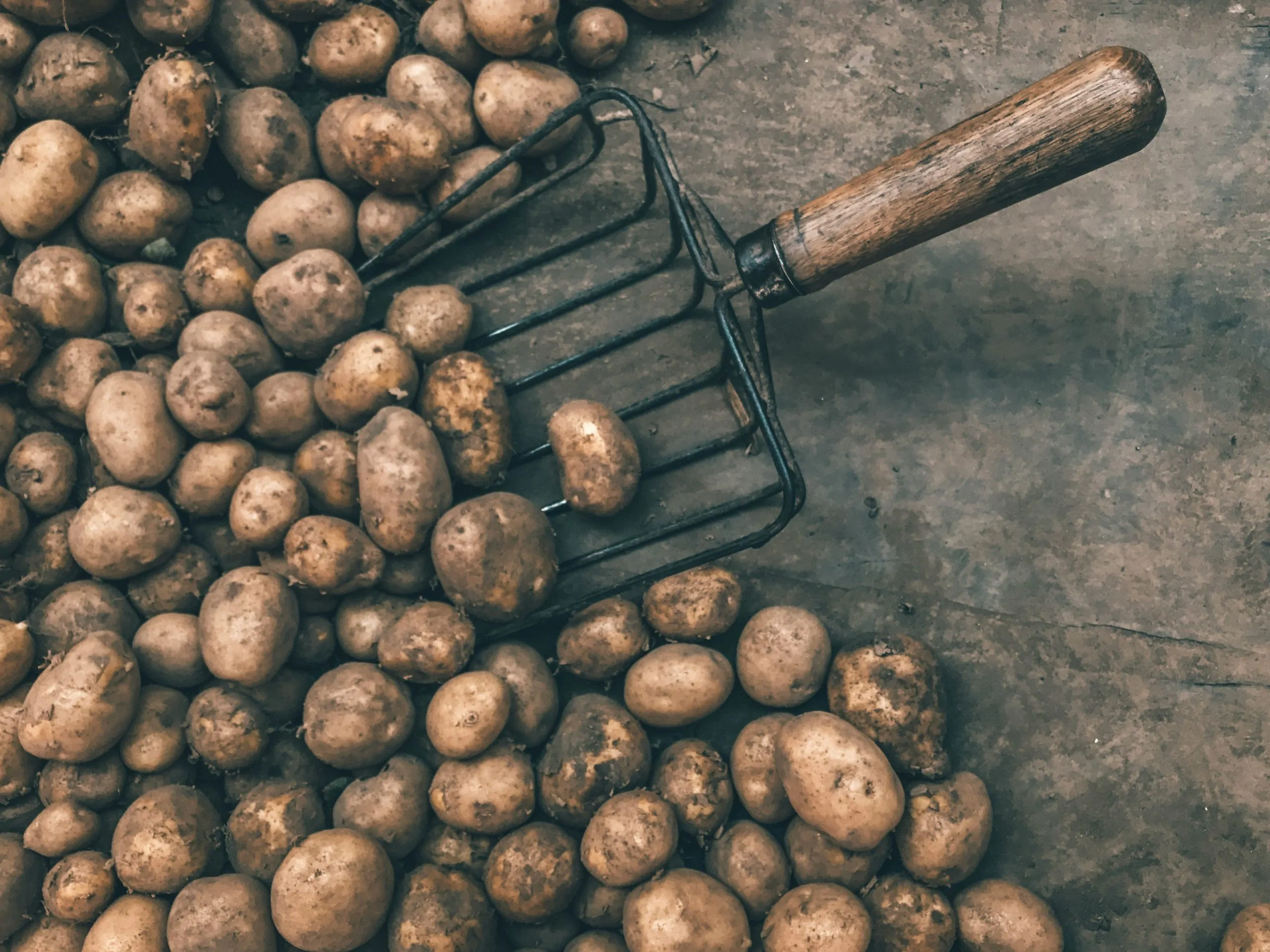
NP Starter Placement Fertiliser for Potatoes
Potatoes have a particularly inefficient root system, meaning placing key nutrients at planting can improve uptake. Placement is particularly helpful in increasing efficiency of phosphate uptake.
Utilising a Multiflo liquid N+P potato fertiliser grade gives farmers greater accuracy and evenness of application, whilst improving the availability of the fertiliser to the crop. The instantly available liquid fertiliser nutrition significantly improves early root and tuber development, and increases tuber numbers.
The trial below compared Multiflo NP grade 7:20:0 placed liquid fertiliser with granular DAP at the same rates of applied P. The OMEX treatment achieved the target yield of >1 million tubers per hectare.
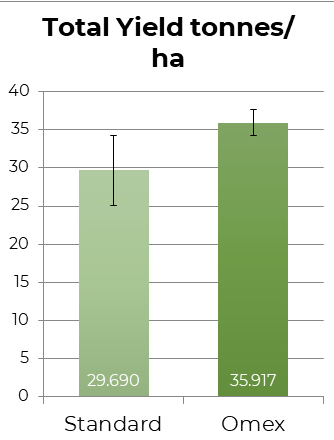
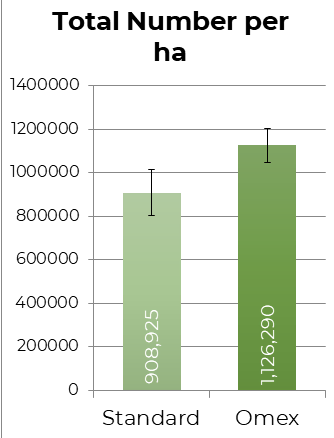
“I’ve been using OMEX Multiflo N&P starter fertiliser on potatoes, with great success.”
Ian Cruickshank Potatoes Ltd
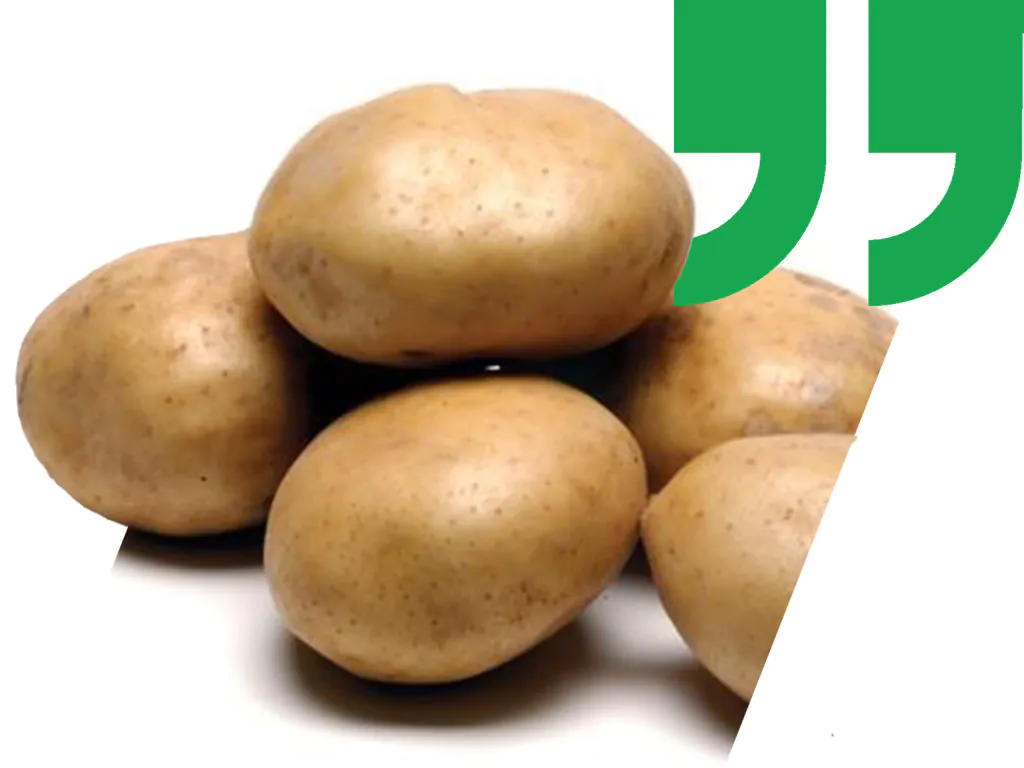
The following OMEX Multiflo NP trial on salad potatoes shows the clear difference between DAP and OMEX NP Multiflo starter fertilisers. The Multiflo fertiliser offered more rapid and even crop emergence placed at planting compared to granular DAP.
View Multiflo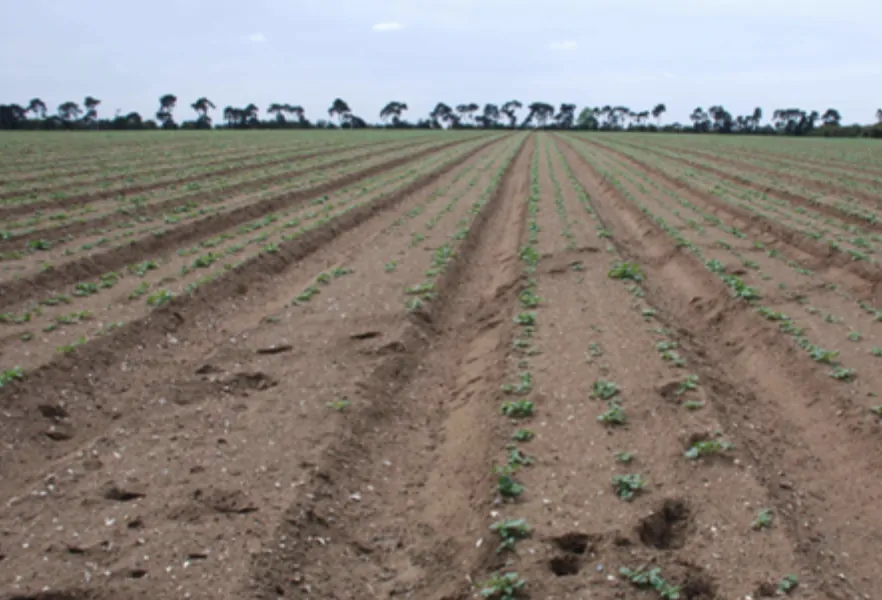
Standard DAP
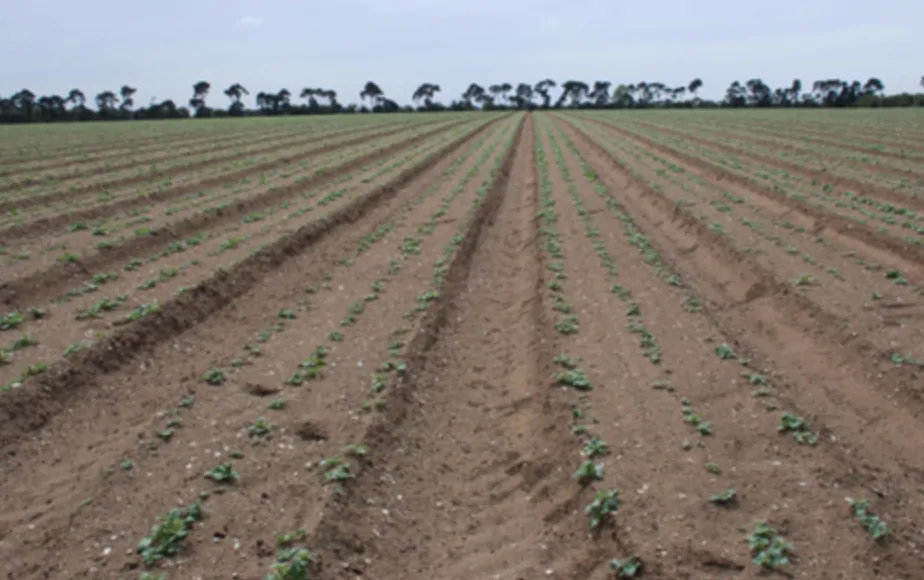
Multiflo
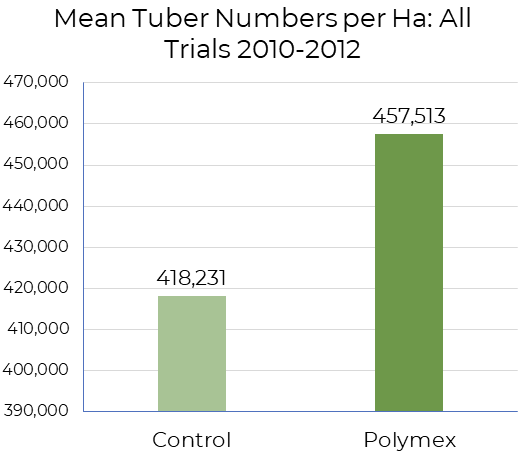
P availability in potato soils
Applied phosphate fertiliser can quickly become locked up in soils, particularly in soils with high pH, high levels of calcium or magnesium or high levels of organic matter. As phosphate is a key element in potato production, responsible for aiding root development and increasing tuber numbers it’s important to ensure the phosphate applied is readily available to the crop.
The phosphate within Multiflo is 100% soluble, meaning once applied the crop is instantly able to take it up. However, over time P can become locked up within the soil, so protecting the nutrient you’ve applied is a sensible decision. Polymex can be applied with your liquid fertiliser P application.
Polymex works to: prolong phosphate availability, make phosphate work better and increase phosphate utilisation efficiency.
This leads to: faster earlier crop development, increased tuber numbers and higher yields.
An OMEX trial looking at the efficiency of Polymex in the potato crop demonstrated a significantly increased number of tubers, thanks to maintained readily available P within the soil.

Nitrogen fertiliser for potatoes
A nitrogen application can be made to the potato crop during planting in the form of Nitroflo nitrogen plus sulphur liquid fertilisers. Your nitrogen application can be further enhanced utilising the nitrification inhibitor DIDIN.
DIDIN works to:
- Prevent rapid conversion of fertiliser and organic N to nitrate by soil bacteria
- Reduce leaching losses in wet weather/under irrigation
- Steadily release N allowing even growth, no overdevelopment of top growth
- Promote better early root development = less likelihood of early senescence
You can see the visual effects of improving nitrogen use efficiency of your potato nitrogen fertiliser utilising DIDIN shown by extended haulm life in the trial below.
Standard process was used on the left hand side, while DIDIN was used on the right
View DIDIN

Improving the carbon footprint of your potato fertiliser application
By providing nutrients like nitrogen, phosphorus and potassium in the right amounts, in the right forms and at the right times we can help promote healthy plant growth, improving yields, so reducing the carbon footprint per tonne of potatoes grown. Addition of DIDIN can reduce the nutrient losses from the soil and emissions of potent greenhouse gasses from the soil, reducing the footprint of growing the crop.
Providing the right form of nitrogen to the crop can reduce the reliance on organic nitrogen from the soil, ensuring organic matter levels are maintained. By adopting the liquid fertiliser approach, farmers can grow potatoes more sustainably, balancing the needs of crop production with environmental stewardship and long-term sustainability.
Not sure what you need? Contact our expert team to discuss your needs and get help choosing the right product for you.
Contact us about potato fertiliser
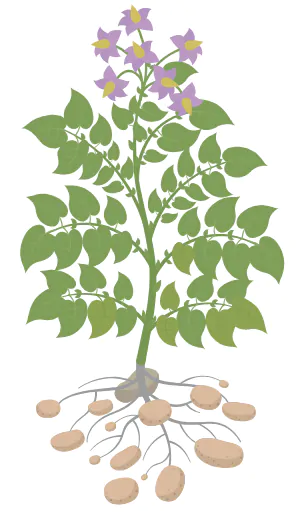
Folex Caleba. Multi-nutrient liquid formulation based on calcium nitrate, formulated for foliar application to a wide range of crops. Folex Caleba reduces the risk od internal rust spot, and created better resistance to physiological break down in storage.
Folex P (for seed). When growing seed potatoes Folex P ensures optimum phosphate availability to maximise tuber numbers and size, especially on high pH soils where P availability is low.
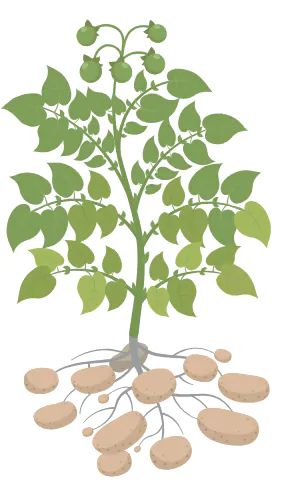
Folex K 39. An inorganic emulsion containing potassium and nitrogen. Potassium plays a key role in tuber formation both in starch production and the movement of sugars from leaves to tubers, also ensuring efficient water use during critical hot, dry conditions
Folex MU35. Foliar N can help to maintain potato crop green leaf canopy for longer, leading to increased tuber size and yield by allowing photosynthesis to continue efficiently. Folex MU35 is very crop safe, effective at low doses and compatible with crop protection.

SAP analysis on potatoes can be used to improve nutrient use efficiency and monitor key nutrient levels. Utilise prescriptive agriculture and supply your potato crop with its precise nutrient requirements and optimise potato fertiliser programmes, with live monitoring of 17 nutrients actively available for growth.
SAP Analysis
Boosting potato health with Bio 20
Bio 20 is a globally successful foliar fertiliser, boosting plant health, quality in yields in crops across the world. Numerous trials have supported it’s use in potatoes.
Bio 20 is highly concentrated and contains 20% nitrogen, 20% phosphorus and 20% potassium plus micronutrients and a seaweed extract. The foliar health booster Increases root mass and reduces stress.

Zynergy is a novel formulation of copper and zinc complexed using OMEX eba™ technology. Zynergy provides rapidly available Copper and Zinc through cost-effective low-dose foliar applications. Copper and Zinc are both vital nutrients for potato crop health.
View Zynergy
- Copper is involved in photosynthesis and the binding of cells that support plant structure, affecting stem strength and the development of new shoot and root tissue.
- Copper is also involved in the activation of a number of enzyme systems related to protein, carbohydrate and Nitrogen metabolism.
- Copper forms part of the phenolic compounds used by plants to suppress infection.
- Copper stress reduces structural integrity, affecting stem strength, leaf expansion and the movement of proteins, carbohydrates and soluble nutrition, resulting in poor canopy and root development, affecting flowering, seed and fruit set.
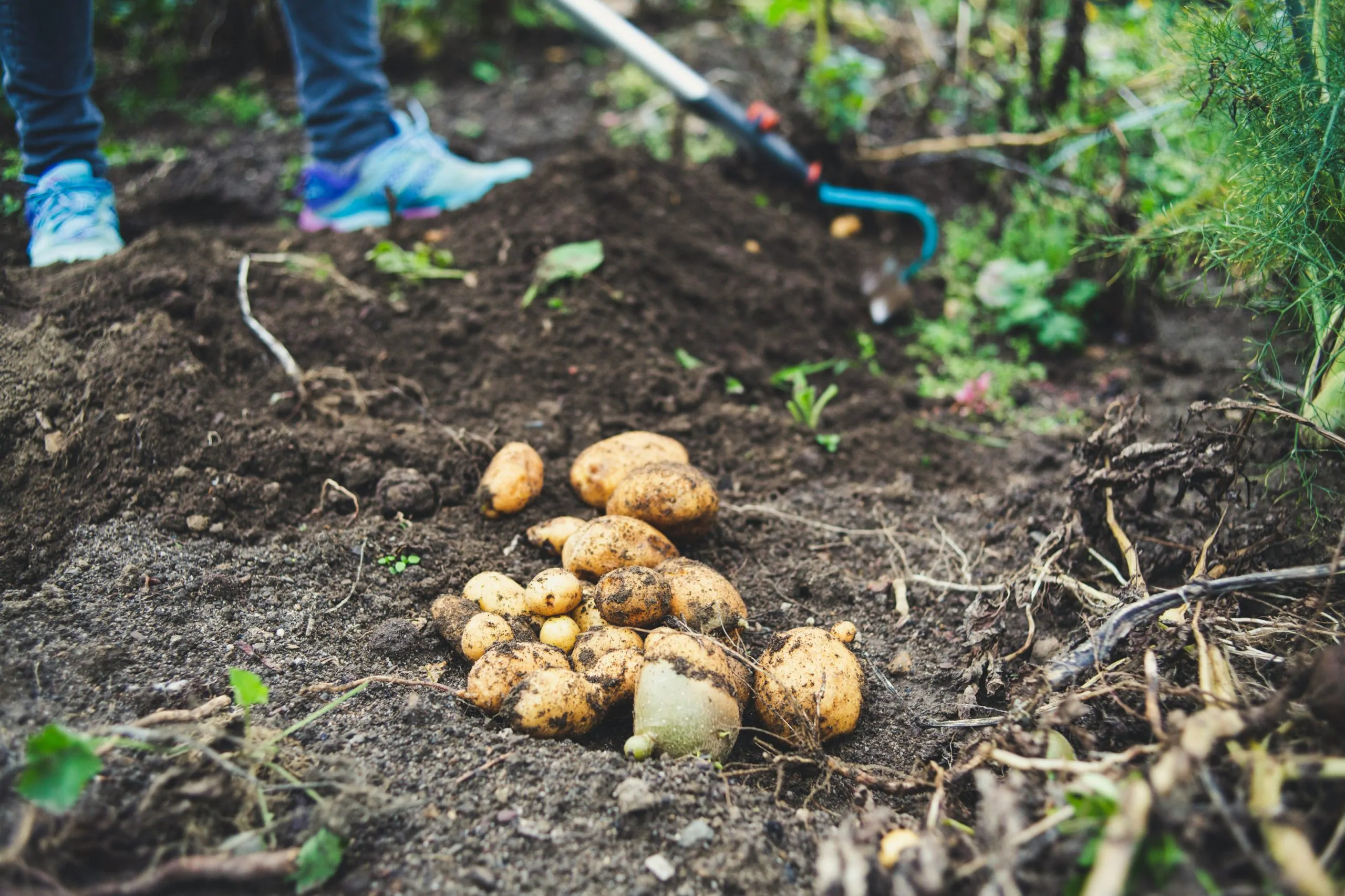
- Zinc is involved in the formation and activation of hormones that regulate root development, water uptake, flowering and fruit set.
- Zinc plays a major role in the structure and function of the integumentry system, affecting skin elasticity, wound healing and disease suppression.
- Zinc stress reduces root development, nutrient recovery and water uptake, leading to low seed or fruit set and slow accumulation of carbohydrate.
- Low Zinc status is often associated high Phosphorous levels, increased drought stress, disease pressure and is worse on alkaline soils and in cold, wet growing conditions.
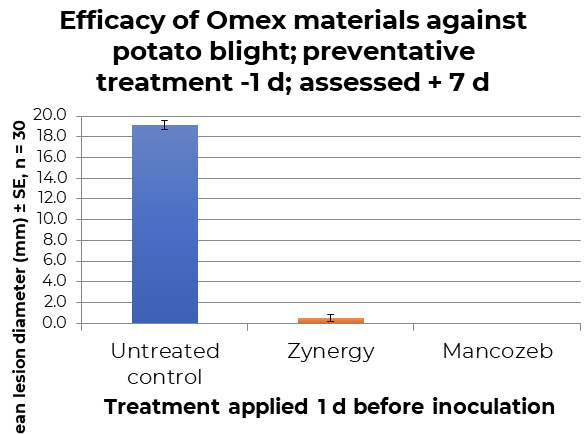
Zynergy Trials
Zynergy has undergone a wealth of trials and research work within OMEX and independently and demonstrates numerous benefits for the potato crop.
The following laboratory experiment conducted by Nottingham University highlighted the efficacy of Zynergy against potato blight.
The photographic record of the experiment clearly shows Zynergy giving equal protection to the standard fungicide, while the untreated, inoculated leaves are totally destroyed
Independent field trials conducted by Eurofins showed that Zynergy plus standard fungicides gave superior blight control to standard fungicides alone
The following Eurofins data shows that although the standard fungicide programme gave good blight control the addition of Zynergy resulted in much greater marketable yield and return on investment
“Role of nutrients in controlling plant diseases in sustainable agriculture. ”
Integrative plant nutrition is an essential component in sustainable agriculture because in most cases it is more cost-effective and also environmentally friendly to control plant disease with the adequate amount of nutrients and with no pesticides. Nutrients can reduce disease to an acceptable level, or at least to a level at which further control by other cultural practices or conventional organic biocides are more successful and less expensive.
A review, Christos Dordas, Agron. Sustain. Dev. 28 (2008) 33–46

